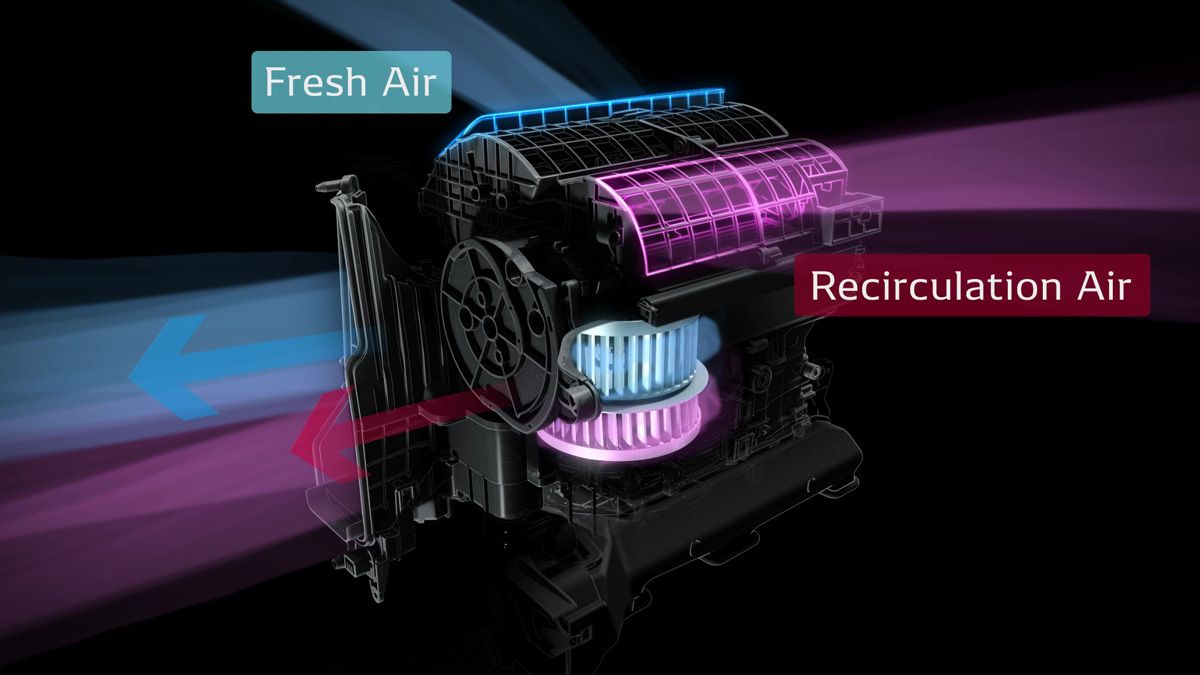DENSO Builds System Architecture Model for Auxiliary Motor to Accelerate Control Design and Verification
“With Simulink and System Composer, we were able to efficiently create a design environment with a higher level of abstraction for the model-based systems engineering domain.”
Challenge
Model and analyze the core and customized parts of auxiliary motors separately before they are integrated.
Solution
Use System Composer as the system architecture and use Simulink to model the customized component of the auxiliary motor.
Results
- Workload reduced by one-third while maintaining high quality
- Model-Based Design process expanded to multiple products
- Automotive SPICE–like development process enabled with a single tool

DENSO blower motors deliver hot and cool air through a vehicle HVAC system.
As a global automotive components manufacturer, DENSO has been using MATLAB® and Simulink® for automotive component development for more than 15 years. DENSO engineers use these tools to individually design motor drive units for various car models. With the scale of design increasing year after year as the number of car models supported grew, they added System Composer™ to improve design efficiency, reduce workload, and achieve compliance with industry standards in the design process.
DENSO first applied System Composer in the development of its blower motors, which deliver hot and cool air through a vehicle’s HVAC system. Using Simulink and System Composer, DENSO engineers can model and analyze the core and customized components of these auxiliary motors separately before they are integrated.
“Simulink and System Composer allow us to model the auxiliary motor at an abstract level. The modeling environment, separated by core and customized parts, has further improved our development efficiency,” says Kazuyuki Hirai, Electronics Engineering Division 1 project manager at DENSO.
Challenge
DENSO designs various types of auxiliary motors, but the conventional way to model and test the core component, which is the common design part, and the customized component, was as a combined unit. To develop auxiliary motors based on standardized ordering requirements such as Automotive SPICE (ASPICE), the core and customized components needed to be modeled and tested separately, then as an integrated whole.
Solution
To build an Automotive SPICE–like workflow, DENSO engineers used System Composer as the architecture model to study the functional arrangement of the common design part, the core part, and the customized part for each application. In the Simulink model, the core and customized components are separated, but the data flow is connected by the architecture model.
Next, they used Requirements Toolbox™ to build traceability between requirements information and the system architecture model. They used Simulink Test™ to manage the link between requirements and tests. In particular, the Traceability Matrix, Implemented Status, and Verified Status features helped verify that the requirements assigned were accurate and complete, enabling a consistent process from requirements elicitation to testing, as required by Automotive SPICE.
Finally, DENSO and MathWorks engineers worked together to create a mechanism that automatically calls and executes the functions of System Composer, Requirements Toolbox, Simulink Test, and Simulink from MATLAB scripts through an API. The ability of System Composer to define stereotypes and property values made it easy to modify the parameters needed for the design of each component via the GUI.
Results
- Workload reduced by one-third while maintaining high quality. “System Composer enabled us to separate core technology design from customized design,” says Ryohei Oishi, who is from Electronics Engineering Division 1 at DENSO. “This greatly contributed to reducing our workload.”
- Model-Based Design process expanded to multiple products. “Now that modeling can be done in the auxiliary motor layer, which has a higher level of abstraction, we expect to be able to expand this process to other auxiliary motors in addition to blower motors,” says Mr. Oishi.
- Automotive SPICE–like development process enabled with a single tool. “System Composer allowed us to consistently manage both highly abstract and concrete models,” says Mr. Hirai.